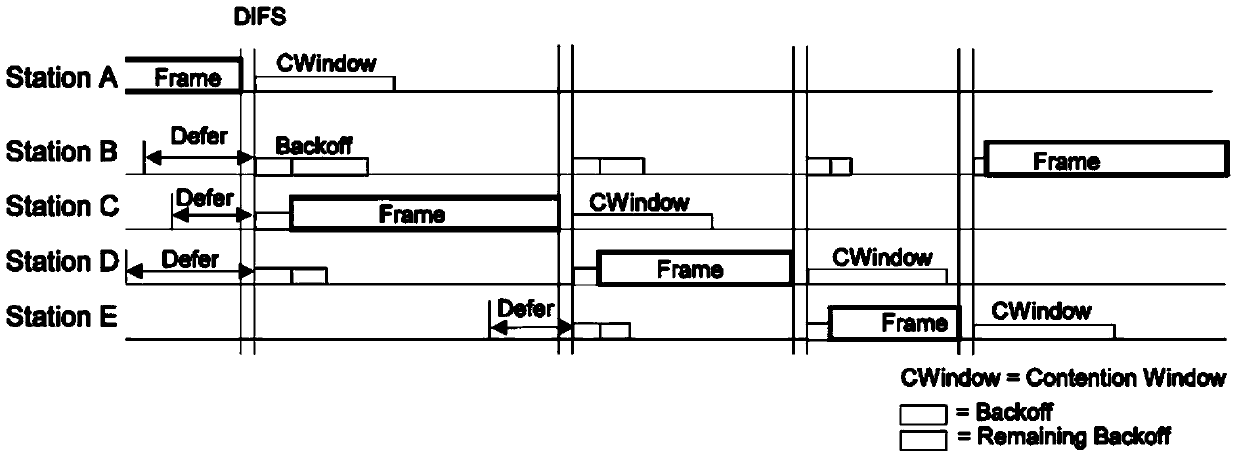A method for controlling uplink power in an unlicensed frequency band and related equipment
An unlicensed frequency band and power control technology, applied in the field of communication, can solve problems such as waste of power consumption, affecting LTE-U uplink performance, and high power consumption of terminals
- Summary
- Abstract
- Description
- Claims
- Application Information
AI Technical Summary
Problems solved by technology
Method used
Image
Examples
no. 1 Embodiment
[0153] In step a, the base station acquires the interference intensity information of the non-LTE system and / or communication nodes of other operators around itself or the terminal.
[0154] First, the base station measures the non-LTE systems and / or communication nodes of other operators around itself to obtain interference intensity information.
[0155] The specific measurement and detection methods used include but are not limited to the following two:
[0156] First, the base station can use the unlicensed frequency band to perform channel measurement and detection in a time period when no uplink or downlink transmission is scheduled. The base station judges the interference intensity of non-LTE communication nodes around itself or LTE-U communication nodes of other operators according to the measurement results of the unlicensed frequency band.
[0157] For example, the base station judges whether there is a strong interference source around the base station according t...
no. 2 Embodiment
[0171] Step a is the same as the description of step a in the first specific embodiment, and will not be repeated here.
[0172] Step b, the base station determines that there are no non-LTE or LTE-U communication nodes of other operators in its surroundings that affect its receiving performance based on the interference intensity information of non-LTE systems and / or communication nodes of other operators around itself or the terminal , and determine that there is an LTE-U communication node of a non-LTE or other operator that affects the receiving performance around the terminal, and determine the uplink transmit power of the terminal according to the interference intensity information of the LTE-U communication node of the non-LTE or other operator.
[0173] Specifically, the base station can determine an appropriate power target value for the terminal according to the interference intensity information of interfering communication nodes around the terminal, and the power ta...
no. 3 Embodiment
[0180] Step a is the same as the description of step a in the first specific embodiment, and will not be repeated here.
[0181] Step b, the base station determines that there are no non-LTE or LTE-U communication nodes of other operators in its surroundings that affect its receiving performance based on the interference intensity information of non-LTE systems and / or communication nodes of other operators around itself or the terminal , and it is determined that there is no non-LTE or LTE-U communication node of other operators that affects the reception performance around the terminal, and it is determined that the uplink transmit power of the terminal is greater than a third preset threshold.
[0182] Specifically, such as Figure 7 As shown, the base station sets the power target value of the terminal to a small value. For example, if the receiving performance allows, set the difference between the power target value and the receiving sensitivity as much as possible within...
PUM
 Login to View More
Login to View More Abstract
Description
Claims
Application Information
 Login to View More
Login to View More - R&D
- Intellectual Property
- Life Sciences
- Materials
- Tech Scout
- Unparalleled Data Quality
- Higher Quality Content
- 60% Fewer Hallucinations
Browse by: Latest US Patents, China's latest patents, Technical Efficacy Thesaurus, Application Domain, Technology Topic, Popular Technical Reports.
© 2025 PatSnap. All rights reserved.Legal|Privacy policy|Modern Slavery Act Transparency Statement|Sitemap|About US| Contact US: help@patsnap.com



